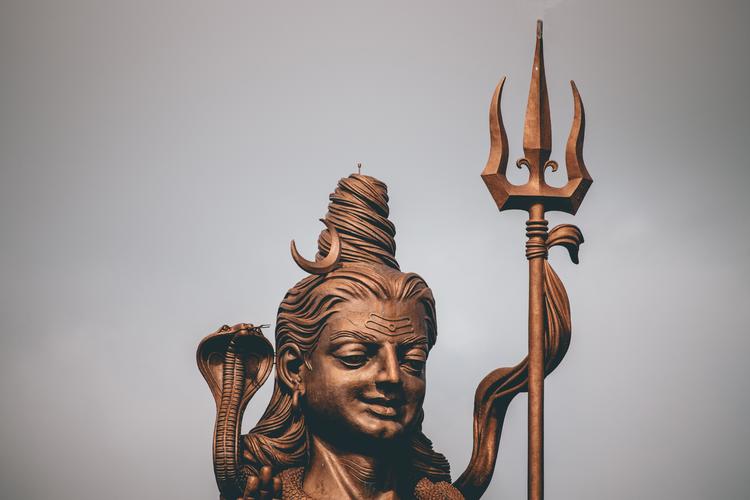Om Ardhanarishvara Namaha: A Deep Dive into the Divine Unity of Shiva and Parvati
Om Ardhanarishvara Namaha. This mantra, which translates to “I bow to the divine union of Shiva and Parvati,” is a profound invocation that encapsulates the essence of one of the most revered deities in Hinduism. In this article, we will explore the multifaceted nature of Ardhanarishvara, delving into its symbolism, significance, and the various aspects of this divine couple.
Symbolism of Ardhanarishvara
Ardhanarishvara is a representation of the ultimate unity of Shiva and Parvati, embodying the concept of Shakti (feminine energy) and Shiva (masculine energy) as one. The deity is depicted as half male and half female, with Shiva’s left half and Parvati’s right half merging seamlessly. This symbolizes the inseparable nature of the two energies and their interdependence.

The left half of Ardhanarishvara, representing Shiva, is characterized by tranquility, asceticism, and wisdom. It is adorned with a crescent moon on the forehead, a snake coiling around his neck, and a trident in his hand. The right half, representing Parvati, is depicted as a graceful, divine woman, adorned with jewelry and a peacock feather in her hair.
Significance of Ardhanarishvara
Ardhanarishvara holds immense significance in Hinduism, as it represents the ultimate union of Shiva and Parvati, who are considered the supreme couple in the Hindu pantheon. This union signifies the balance and harmony between the masculine and feminine energies, which are essential for the creation, preservation, and destruction of the universe.
According to Hindu mythology, Ardhanarishvara is believed to be the source of all creation. The merging of Shiva and Parvati represents the union of the material and spiritual worlds, and their combined power is responsible for the sustenance of life. Ardhanarishvara is also considered the ultimate form of the divine, as it embodies the entire cosmos within itself.
Worship and Rituals
Worship of Ardhanarishvara is an integral part of Hindu rituals and ceremonies. Devotees offer prayers, perform aarti, and offer offerings to the deity to seek blessings and spiritual guidance. The following table provides a brief overview of some common rituals associated with Ardhanarishvara worship:
| Ritual | Description |
|---|---|
| Ardhanarishvara Puja | A special puja performed to honor the deity, involving the recitation of mantras, offering of flowers, and the burning of incense. |
| Ardhanarishvara Aarti | A devotional ritual where aarti is performed in front of the deity, accompanied by the singing of hymns and the waving of lamps. |
| Ardhanarishvara Homam | A sacred fire ritual performed to invoke the deity’s blessings and to seek divine guidance. |
Art and Architecture
Ardhanarishvara is a popular subject in Hindu art and architecture. The deity is often depicted in intricate sculptures and paintings, showcasing the intricate details of the divine couple. Some of the most famous Ardhanarishvara sculptures can be found in the temples of Tamil Nadu, such as the Meenakshi Amman Temple in Madurai and the Brihadeeswarar Temple in Thanjavur.

In Hindu architecture, Ardhanarishvara is often depicted in the form of a relief or a bas-relief on the walls of temples. The Kailashnath Temple in Ellora, Maharashtra, and the Kailasa Temple in Ellora are two notable examples of this architectural style.
Cultural Impact
The concept of Ardhanarishvara has had a profound impact on Hindu culture and society. It represents the equality and balance between the sexes, and serves as a reminder that both Shiva and Parvati are equally important in



